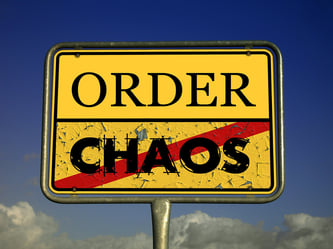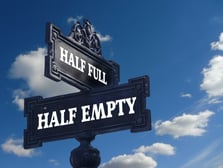Feb 2022 Blog
When it comes to inventory forecasting and planning,COVID-19 is presenting a serious challenge. Cases range from plummeting sales to unprecedented peak sales and to longer lead times, to unavailable stock. Further, the general consensus at the moment, is that the immediate impact as described above will be followed by either an upturn or return to more normalized levels and a gradual return to available stock. Then, there is the unknown question of if the virus will return in the fall/winter and what kind of impact will be felt then. If it becomes an endemic virus, meaning its here to stay like the flu, what then?
Further, the general consensus at the moment, is that the immediate impact as described above will be followed by either an upturn or return to more normalized levels and a gradual return to available stock. Then, there is the unknown question of if the virus will return in the fall/winter and what kind of impact will be felt then. If it becomes an endemic virus, meaning its here to stay like the flu, what then?
Many ERP systems provide some level of inventory forecasting and planning for small and mid-size businesses. While they look like they are complete and may be OK to start planning, they only provide barley 50% of what is really needed for proper efficient use of capital for inventory planning and replenishment. These systems in most cases, do not provide rationalization and optimizations algorithms and processes. This is like trying to drive a car with only two tires or flying a plane with only one wing and one engine.
The ERP systems also usually incorporate text book forecasting models. In many cases you need to select the one that you think will work best. Data shows that without modifying these basic models for real-life situations based on expert knowledge and experience, they often are way off target. The other issue with them, is these built-in forecasting processes do not tell you how to convert the forecast results to an actual stocking quantity by every item (SKU) at every location. More manual, inefficient work to be done to determine how much stock is needed.
 Complexity and trying to manage a long list of variables and make sense of customer demand is overwhelming. Customers are demanding better product availability and top-notch service. If you are heads down trying to determine your replenishment strategy manually or trying to translate what a forecasting tool is telling you, then you are not focused on your customer.
Complexity and trying to manage a long list of variables and make sense of customer demand is overwhelming. Customers are demanding better product availability and top-notch service. If you are heads down trying to determine your replenishment strategy manually or trying to translate what a forecasting tool is telling you, then you are not focused on your customer.
Use of inventory rationalization and optimization is a best practice that is utilized in most FORTUNE 500 companies. So, why aren’t smaller companies employing this best practice?
A lot of the forecasting at the moment can be considered guesswork, but there is an underlying historic baseline that is helps to looking forward. In addition, there are several possible scenarios or strategies making it nearly impossible come up with a plan without an advanced inventory planning system. You have that system with Valogix.
While one might think the same algorithms work for all businesses, it is not the case. Service organizations servicing equipment and systems, for example, get orders for an item when it fails or is broken. Essentially, these organizations are predicting part failure. They forecast, plan and buy oftentimes in multiples of one. Other businesses such as finished goods and distribution, especially master distributors, are predicting business-to-business replenishment orders. These organizations order in multiples (25, 50, 100, etc.) and buy in even larger multiples. The algorithms and business rules for each are different.
Rationalization and optimization consider the wild cards in planning e.g. how random the demand of an item is (i.e. standard deviation) and service level objectives, and it does it for each item, leaving nothing to chance. The optimization is automatic and quickly provides the output on what inventory is needed, where and at what time.
Optimization Theory Overview
 Optimization techniques are used to find a set of design parameters, x = {x1,x2,...,xn}, that can in some way be defined as optimal. In a simple case this might be the minimization or maximization of some system characteristic that is dependent on x. In a more advanced formulation the objective function, f(x), to be minimized or maximized, might be subject to constraints in the form of equality constraints, Gi(x) = 0 ( i = 1,...,me); inequality constraints, Gi( x) ≤ 0 (i = me + 1,...,m); and/or parameter bounds, xl, xu.
Optimization techniques are used to find a set of design parameters, x = {x1,x2,...,xn}, that can in some way be defined as optimal. In a simple case this might be the minimization or maximization of some system characteristic that is dependent on x. In a more advanced formulation the objective function, f(x), to be minimized or maximized, might be subject to constraints in the form of equality constraints, Gi(x) = 0 ( i = 1,...,me); inequality constraints, Gi( x) ≤ 0 (i = me + 1,...,m); and/or parameter bounds, xl, xu.
A General Problem (GP) description is stated as subject to where x is the vector of length n design parameters, f(x) is the objective function, which returns a scalar value, and the vector function G(x) returns a vector of length m containing the values of the equality and inequality constraints evaluated at x.
An efficient and accurate solution to this problem depends not only on the size of the problem in terms of the number of constraints and design variables but also on characteristics of the objective function and constraints. When both the objective function and the constraints are linear functions of the design variable, the problem is known as a Linear Programming (LP) problem. Quadratic Programming (QP) concerns the minimization or maximization of a quadratic objective function that is linearly constrained. For both the LP and QP problems, reliable solution procedures are readily available.
More difficult to solve is the Nonlinear Programming (NP) problem in which the objective function and constraints can be nonlinear functions of the design variables. A solution of the NP problem generally requires an iterative procedure to establish a direction of search at each major iteration. This is usually achieved by the solution of an LP, a QP, or an unconstrained sub-problem.
Basically, what inventory optimization does is balance the investment in an inventory with the fill-rate (service level) goals of a company. There are also financial considerations, constraints that can also be applied in the development of the algorithm. These highly complex algorithms work behind the scene so as not to confuse the user or make them fearful of using optimization to help manage their inventory.
 We have determined that you can dramatically improve the effectiveness of the optimization algorithms by adding heuristics into the overall process equation. Heuristic refers to experience-based techniques for problem solving, learning, and discovery. Heuristic methods are used to speed up the process of finding a satisfactory solution, where an exhaustive search is impractical. Dynamic intelligence keeps pace with the raid changes in demand and supply to keep your inventory as near perfect as possible.
We have determined that you can dramatically improve the effectiveness of the optimization algorithms by adding heuristics into the overall process equation. Heuristic refers to experience-based techniques for problem solving, learning, and discovery. Heuristic methods are used to speed up the process of finding a satisfactory solution, where an exhaustive search is impractical. Dynamic intelligence keeps pace with the raid changes in demand and supply to keep your inventory as near perfect as possible.
Advanced inventory planning and optimization software not only automates the entire planning process but also it dramatically increases the positive cash flow of a company. By smartly reducing inventory investment, reducing stock-outs, decreasing expedited shipping costs, and reducing planning time all contribute to more available cash. Add to that increased sales and productivity and the gains will also lead to an improved competitive advantage.
According to a high-growth, long term Valogix customer, “Valogix allows us to know what we are going to need before we need it. It sees trends and usages and helps us plan for them. This would not be possible the way we were replenishing prior to Valogix.”

